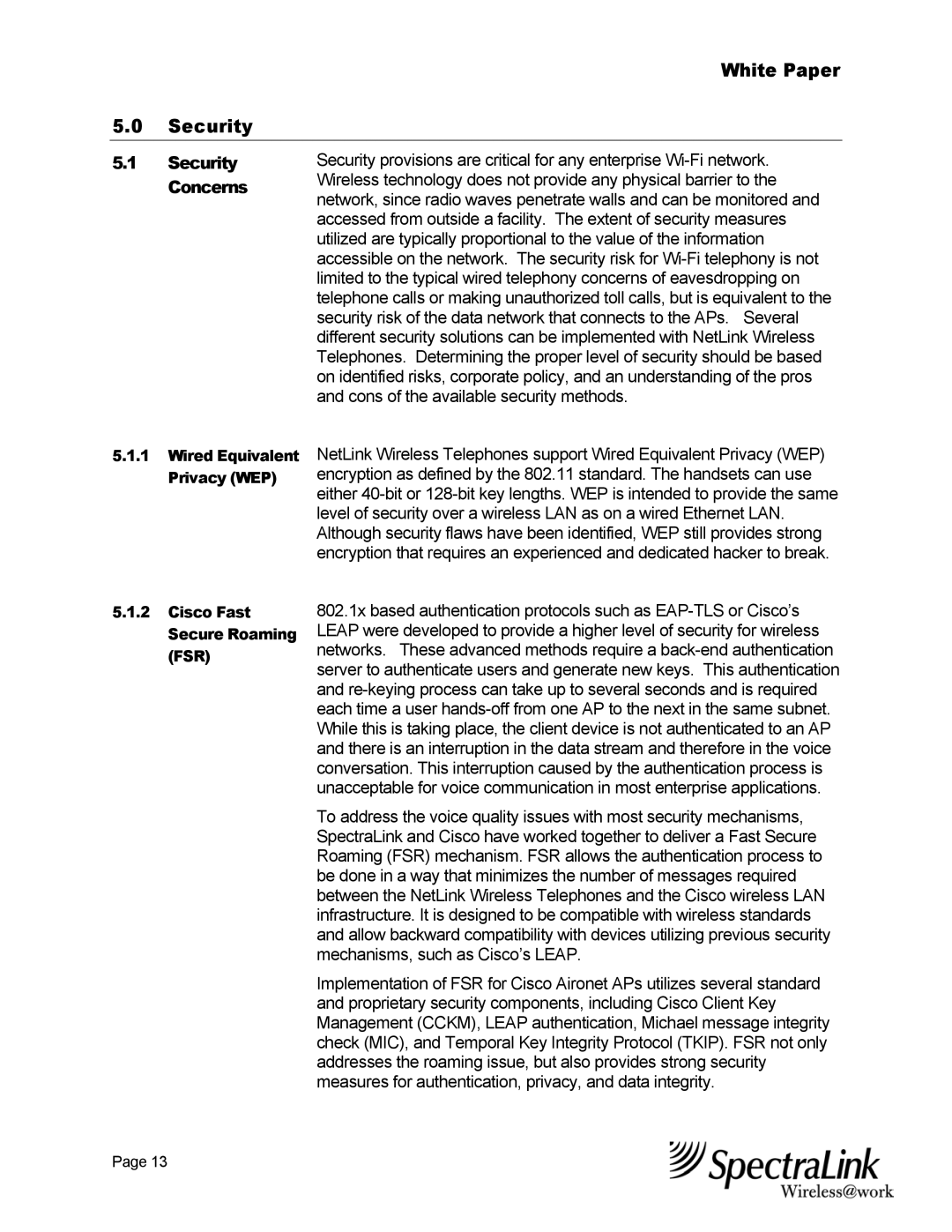
White Paper
5.0Security
5.1Security Concerns
Security provisions are critical for any enterprise
5.1.1Wired Equivalent Privacy (WEP)
NetLink Wireless Telephones support Wired Equivalent Privacy (WEP) encryption as defined by the 802.11 standard. The handsets can use either
5.1.2Cisco Fast Secure Roaming (FSR)
802.1x based authentication protocols such as
To address the voice quality issues with most security mechanisms, SpectraLink and Cisco have worked together to deliver a Fast Secure Roaming (FSR) mechanism. FSR allows the authentication process to be done in a way that minimizes the number of messages required between the NetLink Wireless Telephones and the Cisco wireless LAN infrastructure. It is designed to be compatible with wireless standards and allow backward compatibility with devices utilizing previous security mechanisms, such as Cisco’s LEAP.
Implementation of FSR for Cisco Aironet APs utilizes several standard and proprietary security components, including Cisco Client Key Management (CCKM), LEAP authentication, Michael message integrity check (MIC), and Temporal Key Integrity Protocol (TKIP). FSR not only addresses the roaming issue, but also provides strong security measures for authentication, privacy, and data integrity.
Page 13
